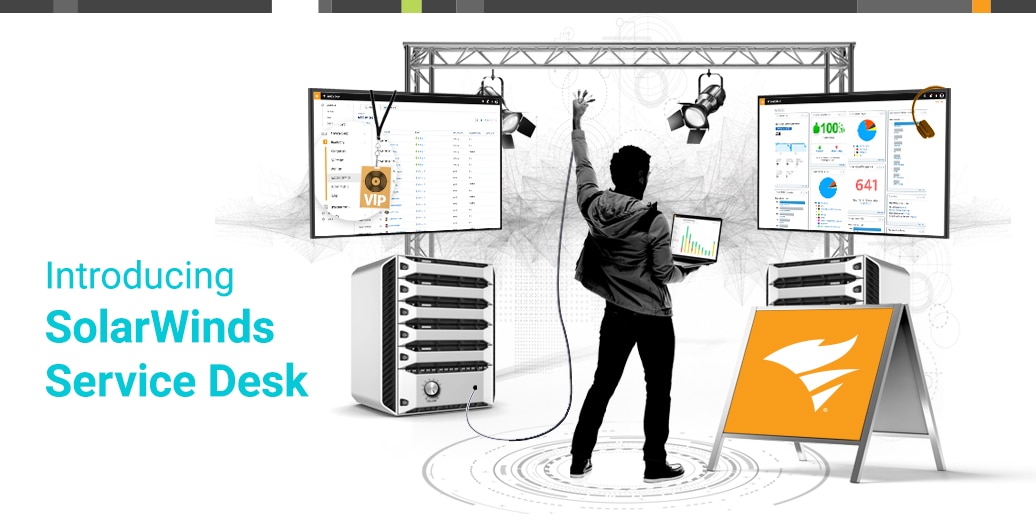When we look back on this rollercoaster of a year that was 2020, we’ve all faced some of the most unforgettable, challenging, and transformative experiences of our lives—and many of them are going to shape how we plan for the future. For businesses that had to discover new ways to keep operating, they’re revisiting derailed 2020 plans for the new year with detailed strategies to handle the unexpected. As employees continue to propel operations, those same businesses now need to focus on how to help the employee.
This year introduced a lot of IT infrastructure changes in the business. Heading into 2021 and beyond, there will be an even greater need for IT to deliver technology service and enablement to employees through the
service desk. Let’s take a look at four user-centric service avenues that we expect to shine next year.
Employee-focused service management
As organizations transitioned to
supporting remote employees, and even teams that remained in-person or did a combination of the two, there was a keen focus on
who the service desk was providing services to. Communication channels, service requests, and searching for answers became completely virtual and digitized, but created a major opportunity for teams to hone the value of their services and find inventive ways of connecting to users.
There are two key areas where organizations can enhance their service management strategies: meaningful engagement and accessibility to available resources and services.
Meaningful engagement
Think about some of your service experiences. Whether it was excellent with 100% attentiveness and assistance, or a completely awful experience because of lackluster customer service, the interactions you had with the provider had an impact on your service expectations. Similarly as an IT pro, how you present the service desk and respond to employees’ needs sets the tone for how often (and willing) they’ll engage with it.
On your journey of continual improvement, gauge your users’ interactions through the portal and
CSAT surveys, and implement changes related to these suggestions. Design the
knowledge base and request forms with the users in mind, and mirror the tone of voice to the organization’s culture.
Accessible resources and services
You may have heard the expression, “a ticket should be the last resort.” It’s a great thought, but it will never become the reality in your organization if employees can’t figure out where to find the resources they need. Making the service portal and other support resources easy to find and navigate contributes to that meaningful engagement while encouraging users to repeat their visits to the service desk.
One way to further increase service portal adoption is to use the service desk
beyond IT. Having company-wide resources, request forms, and support channels—from HR to finance and legal—makes it easy for employees to find anything they need. It also encourages them to start with the portal next time.
Automation and streamlined processes
Automating internal processes can yield benefits for service providers and create a positive experience for users. For example, if you find there’s duplicate data collected from a request to get a new laptop,
automation could simplify data entry or remove it altogether to avoid confusion. This could help requesters compile information upfront and get IT pros the necessary details to provide a smoother service or resolution.
Also consider what types of data to collect when employees submit incident tickets or service requests. Establishing what’s mandatory,
service delivery expectations, priority levels, etc. makes for a more transparent service.
Centralized visibility
As I briefly mentioned above, duplicate data can cause confusion for users and service providers. With this in mind, we can expect to see more businesses consolidate solutions in 2021. Most notably, uniting
ITSM with
IT asset management (ITAM) can give IT a “single pane of glass” that shows the lifecycle of an organization's IT assets and the relationships between them.
This unity can help service providers with better troubleshooting or creation of knowledge content, which leads to improved user services. The next time an employee submits a ticket? You can already know which laptop is causing the issue.
Maximizing services with smart technologies
AI, machine learning, and other smart technologies are a proven feature in the service desk that can amplify user-centric service strategies. Whether it’s suggesting relevant articles to a user or
predicting downtimes before they happen, smart technology will be a key way to bolster self-service, decrease response and resolution times, and increase users’ engagement with the service desk.
In 2021, expect to see more organizations recognizing the service desk as the central resource for employees, no matter where they’re working. Applying these four service strategies can help drive better service and business outcomes through 2021 and beyond.








